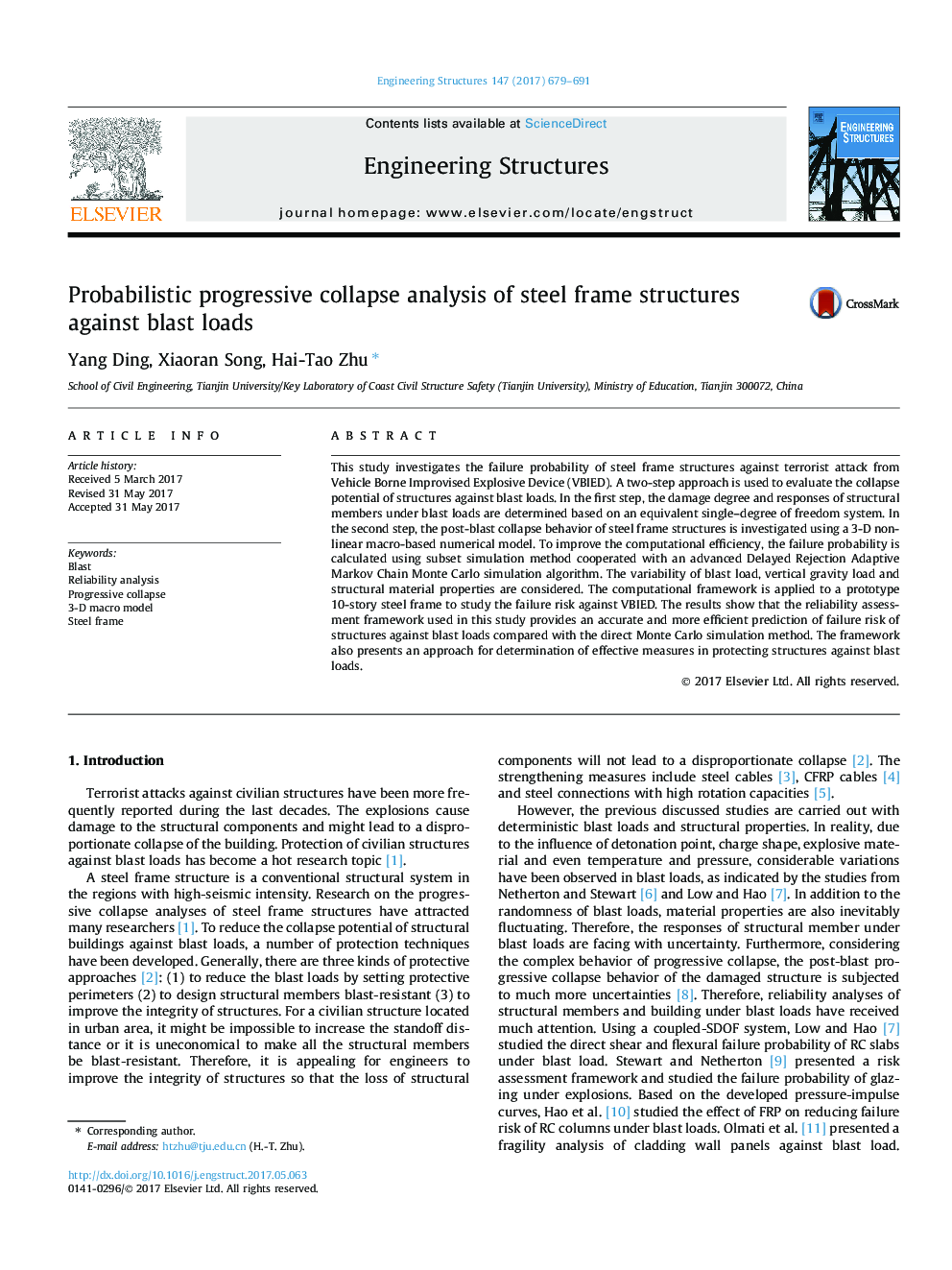| Article ID | Journal | Published Year | Pages | File Type |
|---|---|---|---|---|
| 4919940 | Engineering Structures | 2017 | 13 Pages |
Abstract
This study investigates the failure probability of steel frame structures against terrorist attack from Vehicle Borne Improvised Explosive Device (VBIED). A two-step approach is used to evaluate the collapse potential of structures against blast loads. In the first step, the damage degree and responses of structural members under blast loads are determined based on an equivalent single-degree of freedom system. In the second step, the post-blast collapse behavior of steel frame structures is investigated using a 3-D nonlinear macro-based numerical model. To improve the computational efficiency, the failure probability is calculated using subset simulation method cooperated with an advanced Delayed Rejection Adaptive Markov Chain Monte Carlo simulation algorithm. The variability of blast load, vertical gravity load and structural material properties are considered. The computational framework is applied to a prototype 10-story steel frame to study the failure risk against VBIED. The results show that the reliability assessment framework used in this study provides an accurate and more efficient prediction of failure risk of structures against blast loads compared with the direct Monte Carlo simulation method. The framework also presents an approach for determination of effective measures in protecting structures against blast loads.
Related Topics
Physical Sciences and Engineering
Earth and Planetary Sciences
Geotechnical Engineering and Engineering Geology
Authors
Yang Ding, Xiaoran Song, Hai-Tao Zhu,
